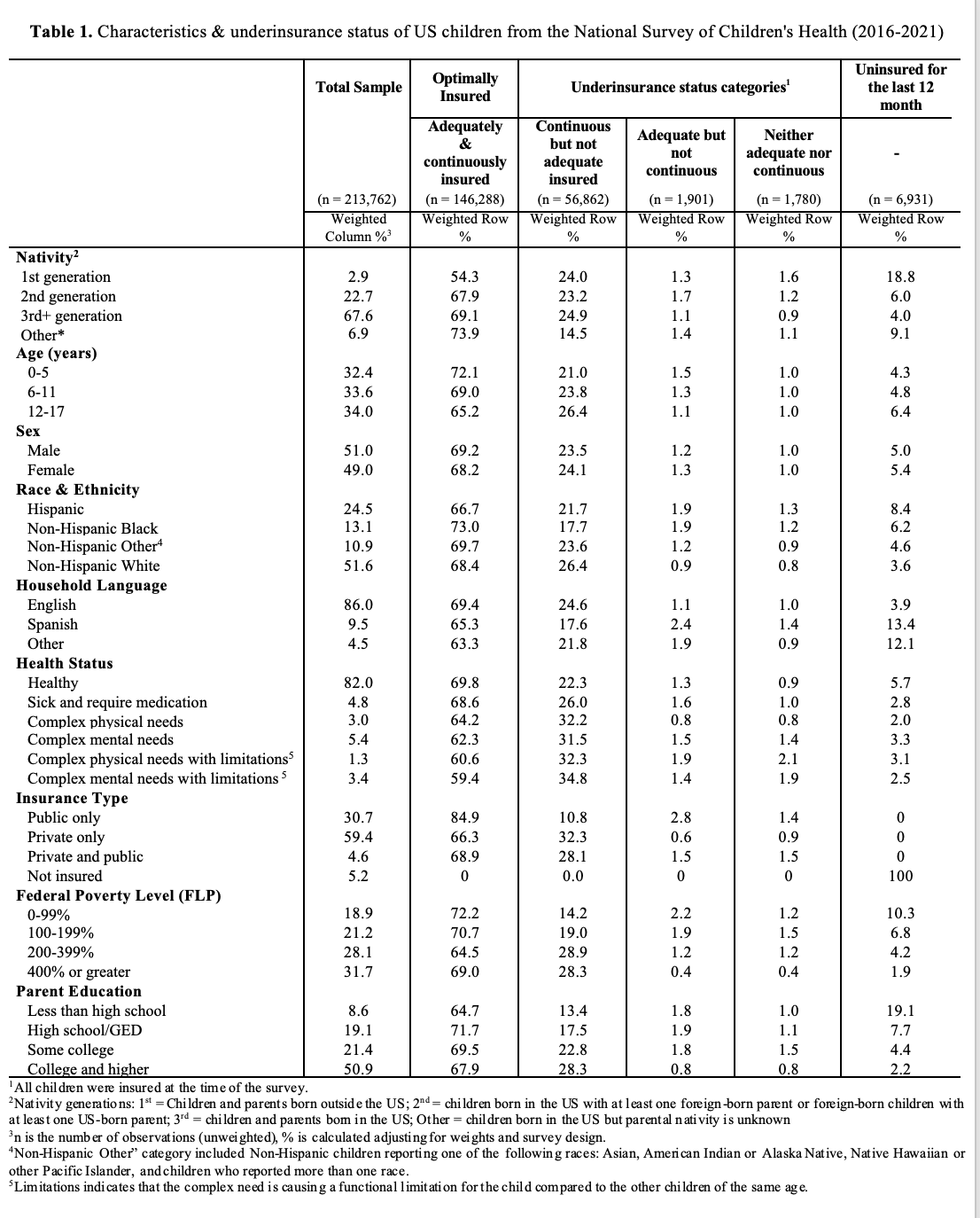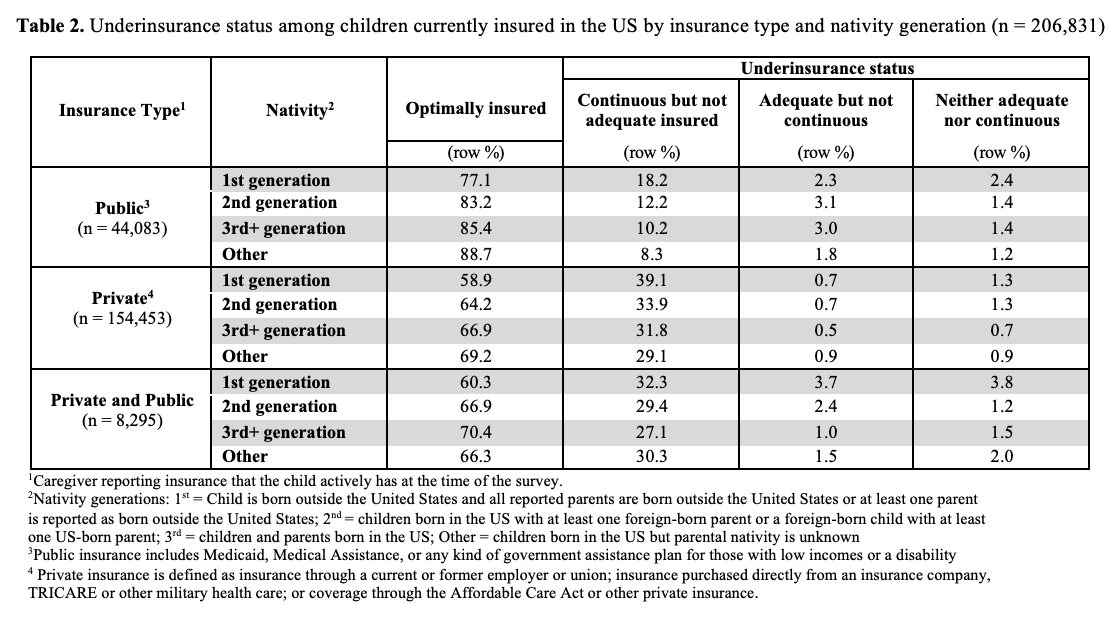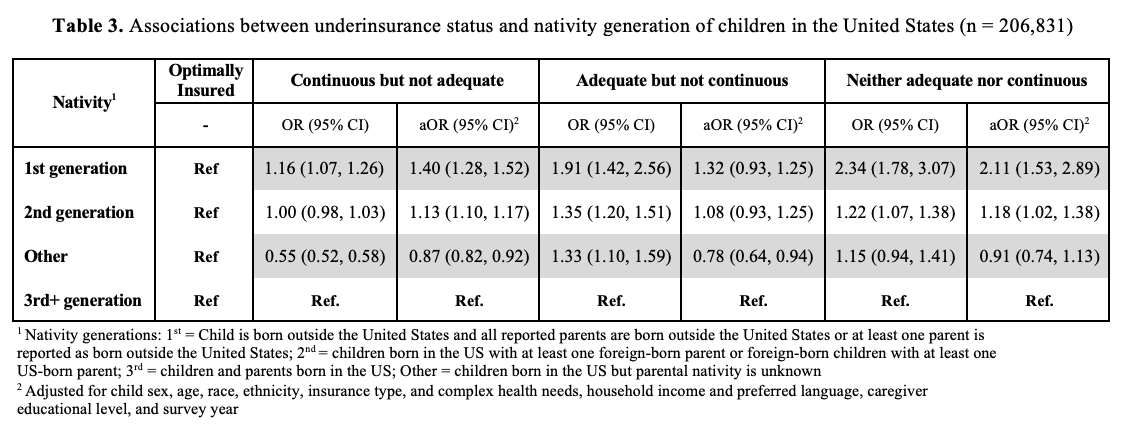Health Services Research
Session: Health Services Research 3: Access
231 - Underinsurance as defined by continuity and adequacy of health insurance coverage among children in immigrant families.
Sunday, May 5, 2024
3:30 PM - 6:00 PM ET
Poster Number: 231
Publication Number: 231.1902
Publication Number: 231.1902

Evelyn Obregon, MD
Neonatology Fellow
Cincinnati Children's Hospital Medical Center
Cincinnati, Ohio, United States
Presenting Author(s)
Background: Continuous and adequate health insurance coverage is critical for children’s access to appropriate medical services. Children in immigrant families (CIF) face different barriers to obtaining health insurance, with access differing based on their and their parents’ nativity (i.e., place of birth). However, data is lacking on whether coverage among insured CIF appropriately meets their healthcare needs.
Objective: To examine the relationship between children’s nativity and underinsurance status, as defined by adequacy to meet healthcare needs at reasonable cost and consistency of coverage in the last 12 months, as well as variation in underinsurance status by type of insurance coverage.
Design/Methods: Cross-sectional study of currently-insured children in the US from 2016–2021 in the National Survey of Children’s Health (n=213,762). The primary outcome was underinsurance status in the last 12 months, defined as insurance that was: 1) adequate and continuous (i.e., optimal); 2) continuous but not adequate; 3) adequate but not continuous; or 4) neither adequate nor continuous. We described underinsurance status by four categories of child nativity (based on their generation) and type of health insurance. Multinomial logistic regression models examined associations between child nativity and underinsurance status, adjusting for familial sociodemographic characteristics and survey year.
Results: The majority of underinsured children were continuously but not adequately insured (Table 1). Among 1st generation children, 23% and 42% were underinsured despite being covered by public and private insurance, respectively, with the primary reason being inadequate coverage for both groups (Table 2). In adjusted models, relative to 3rd generation children, 1st generation children have 1.4 times the odds of being continuously but not adequately insured vs. optimally insured (95% CI 1.28-1.52) (Table 3). Second generation children had 1.18 times the odds of being neither adequately nor continuously insured vs. optimally insured (95% CI 1.02-1.38), relative to 3rd generation children. First generation children had the highest odds of being neither adequately nor continuously insured (aOR 2.11; 95% CI 1.53, 2.89).
Conclusion(s): Underinsurance status varies by children’s nativity. Among 1st and 2nd generation CIF, it is largely due to coverage that is inadequate to meet their healthcare needs or that is beyond reasonable cost. Future work is needed to understand the potential differential impact of insurance type on risk of underinsurance and devise solutions to optimize coverage among all children, regardless of nativity.



